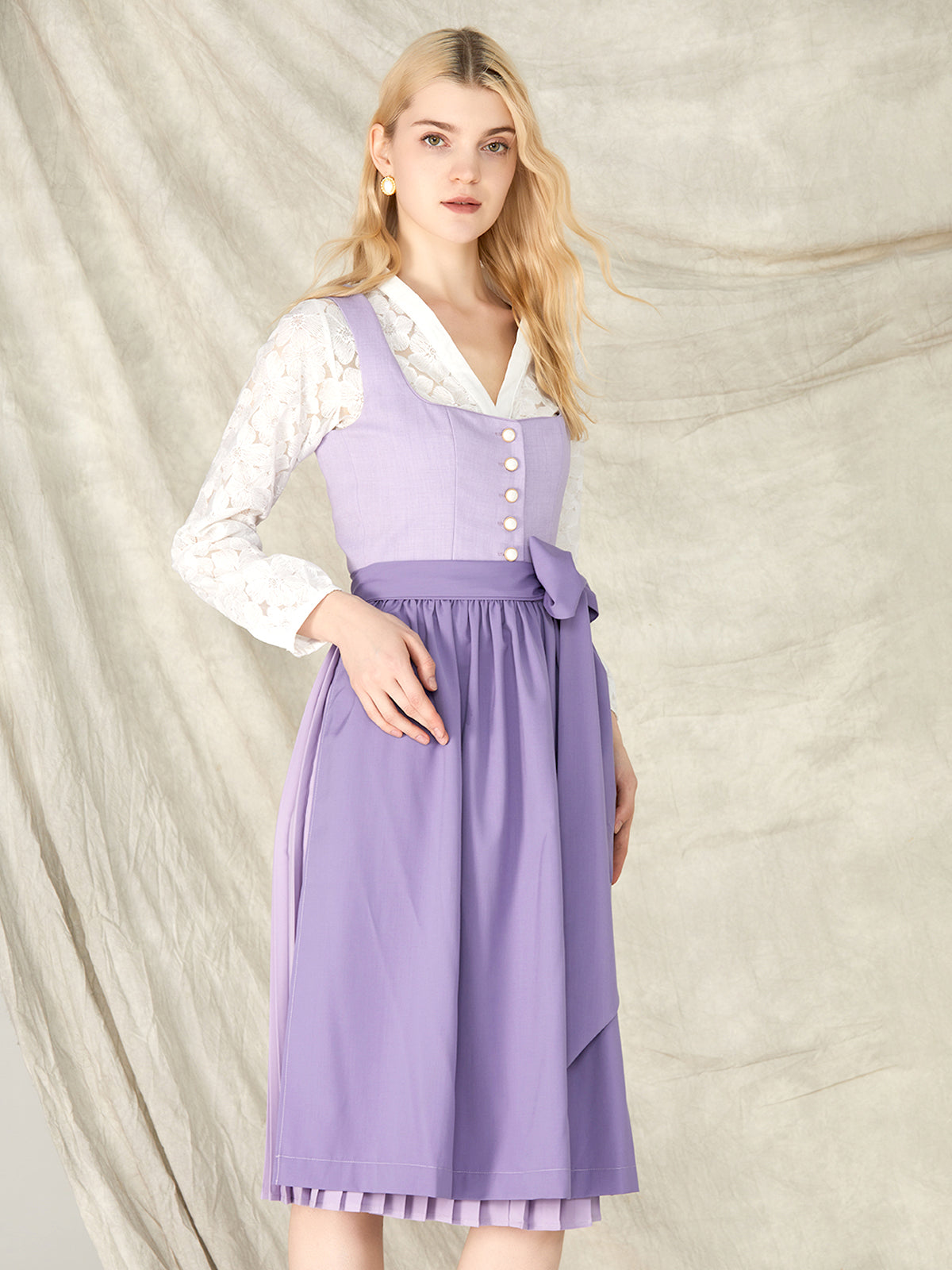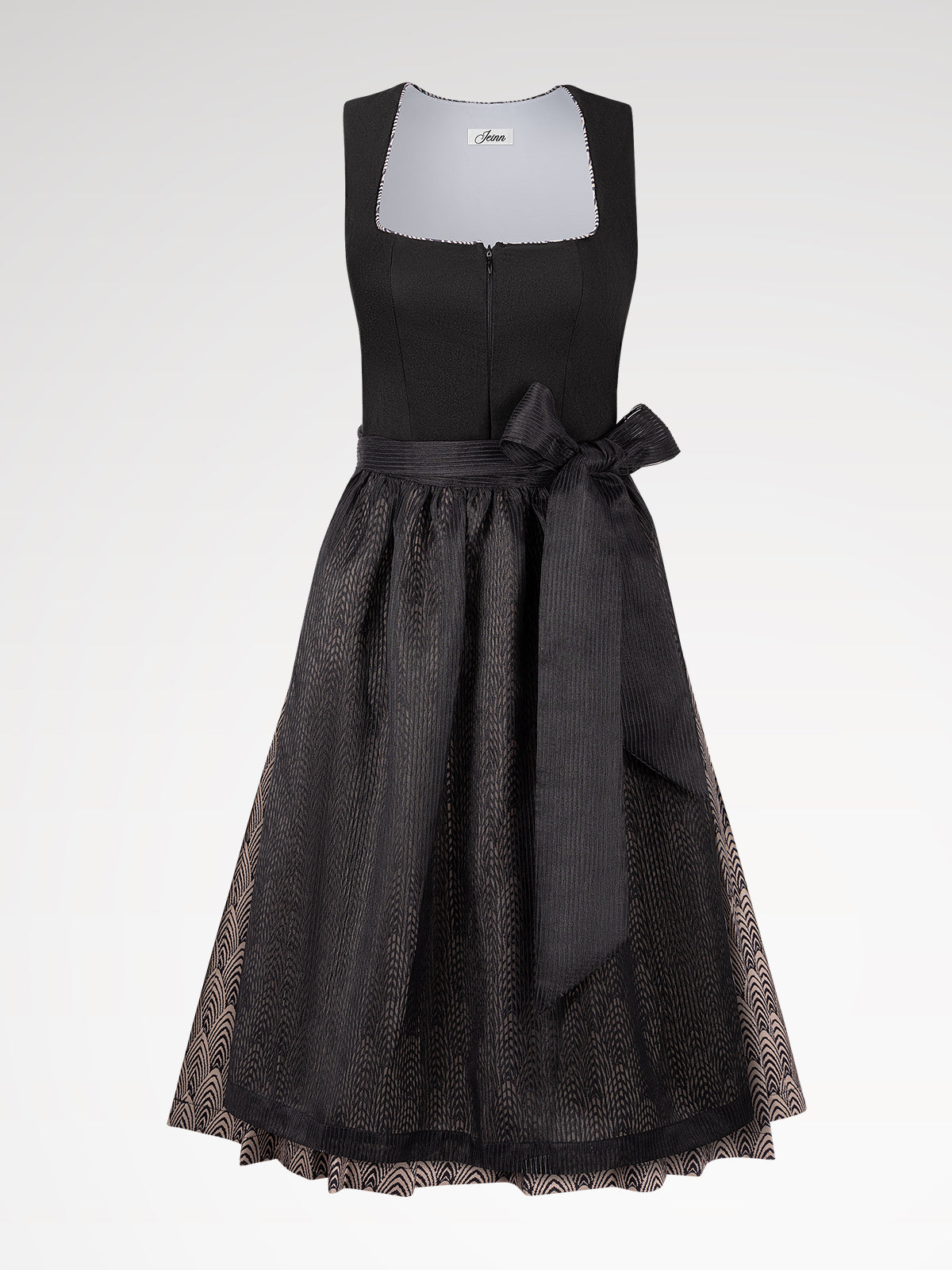Introduction
In the valleys of the Alps, a fabric dances that hides centuries of German history in its folds. Dirndl – once the robust workwear of Bavarian peasant women – has become a global cultural symbol. With over 200,000 units sold annually and a dirndl trend 2025, the gray dirndl made from recycled velvet (dirndl velvet), this garment remains a subject of research for historians and fashion enthusiasts.
I. 14th century: The roots of peasant workwear
In the Middle Ages, the Dirndl exclusively practical purposes. Women from the Bavarian villages wore a simple shirt made of wool or linen, combined with a wide apron and a bodice. The color gray dirndl dominated here not only for aesthetic reasons, but also to conceal dirt from field work.
- Material innovations:
Until the 16th century, plant-dyed fabrics were used, with grey tones (dirndl grey) being produced by oak bark or iron vitriol. - Symbolism:
The apron served as a status symbol – the denser the pattern, the higher the social status.
II. 19th century: aristocratic transformation and Prussian influence
With the Romantic movement, Prussian aristocrats discovered Alpine culture. King Ludwig I of Bavaria promoted the introduction of the Dirndl as a "national costume", whereby he used the colors on gray dirndl and white in order to create a unified state representation.
- Fashion innovations:
- Puff sleeves and lace trim made of Lyon silk
- Shortened skirts to emphasize the hips
- Introduction of dirndl velvet for noble ladies
- Commercial turnaround:
By 1880, the dirndl sale in Munich and Vienna, with boutiques like "Trachten-Haus" offering luxury velvet models.
III. Post-war period: Tourism as a driver of commercialization
After 1945, the Dirndl a decline until US tourists discovered it as "exotic folk art" in the 1950s. The Munich Wiesn (Oktoberfest) laid the foundation for the modern dirndl trend 2025:
- Material experiments:
Denim fabric (1970s) and artificial fibers made the dress more affordable. Gray dirndl made of polyester dominated the mass market. - Global Markets:
Online shops like "Dirndl-Heaven" now record 35% of their sales in dirndl sale with international customers.
IV. 21st Century: Fusion of Tradition and Avant-Garde
Today, designers like Lenny Hofmeister the Dirndl with subculture elements:
- Punk rock twist:
Studded trim and black leather accents (2023 Collection) - Boho chic:
Flowy aprons made of cotton and ethnic patterns (dirndl trend 2025) - Sustainability:
Brands like "EcoTracht" rely on recycled dirndl velvet and gray dirndl as an eco-trend.
V. Appendix: Treasures of the Deutsches Museum Munich
The Deutsches Museum presents three masterpieces in its "Textile Heritage" collection:
- Farmer's Dirndl (1820):
Handwoven wool fabric with gray-brown stripes, found in a Berchtesgaden farmhouse. - Noble Dirndl (1895):
Velvet dress with silver embroidery, once worn by Princess Marie of Bavaria. - Modern design (2015):
A gray dirndl Made from organic cotton with LED lights in the hem, designed by students of the Munich Art Academy.
Conclusion
From practical workwear to runway sensation – the Dirndl remains a living archive of German culture. dirndl trend 2025, which focuses on sustainability and individuality, this piece of fabric will probably conquer the hearts (and desks of fashion journalists) for a long time to come.





Leave a comment
This site is protected by hCaptcha and the hCaptcha Privacy Policy and Terms of Service apply.